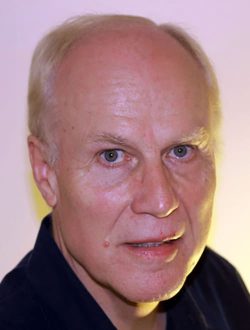Biography
James M. Schellenberg (S’68-M’71-SM’94-LSM’10) was born in Reedley, California in 1945. He received the B.S. degree in electrical engineering from Fresno State University, Fresno, CA in 1969, and the M.S. degree in electrical engineering from Johns Hopkins University, Baltimore, MD, in 1973.
From 1969 to 1978, he was employed by Westinghouse Electric Corporation, Advanced Technology Laboratories, in Baltimore, MD where he was responsible for bipolar and FET power amplifier/combiner design. From 1978 to 1988 he was employed by Hughes Aircraft Company, Microwave Products Division, in Torrance, CA. There he was responsible for many industry firsts in GaAs hybrid/monolithic IC technology, particularly at millimeter-wave frequencies. From 1988 to 2005 he was with Schellenberg Associates developing power MMICs for millimeter-wave applications. From 2005 to 2008 he worked for Trex Enterprises in Kahului, HI developing mm-wave imaging radars. In 2008 he joined QuinStar Technology as their Chief Engineer.
Mr. Schellenberg is the inventor of the radial-line power combiner (U.S. Patent No. 4,234,854) and the Dolph-Tchebycheff planar power combiner (U.S. patent 4,835,496) and has pioneered the development of hybrid/monolithic FET amplifiers/oscillators at millimeter-wave frequencies. He has been awarded the 1978 IR-100 Award for the FET radial line power combiner and the 1981 ISSCC Beatrice Winner Award. He is the author of 8 U.S. patents and more than 50 technical papers.
His current research interests include nonlinear analysis/modeling of power amplifiers, high-power broadband amplifiers/combiners and millimeter-wave GaN power MMICs.
Presentations
MM-wave GaN Power Amplifiers: Technology to Power the Future
The emergence of 5G cellular has created new interest in the millimeter-wave spectrum. This frequency band (30 to 300 GHz) remains a great untapped resource that must be utilized in order to realize the goals (5G and beyond) of the Internet and cell phone industries. There simply is not enough bandwidth at lower frequencies to satisfy future system requirements for speed and capacity. The millimeter-wave spectrum is also of great interest to military and industrial planers, where the enhanced resolution provided by greater bandwidths is necessary to meet future systems goals. Fortunately, a new device/materials technology has emerged which can meet these requirements. This is GaN on SiC substrates. MMICs fabricated with this high bandgap materials offer a factor of 10 improvement in the power density compared with older technologies such as GaAs and InP.
This talk will focus on GaN MMIC technology and how it can address industry (commercial and military) power needs at millimeter-wave frequencies. I will first present where the technology currently is in terms of power, efficiency and frequency, and then present where it is headed. I will also present the factors limiting performance and cost and offer possible solutions.
